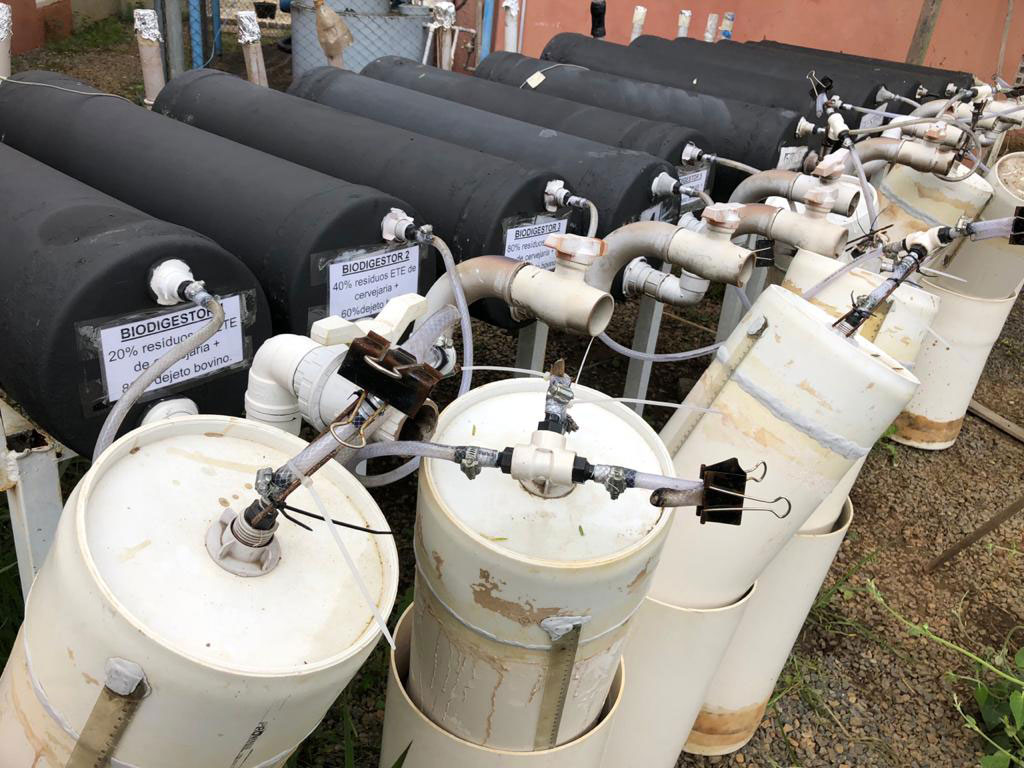Share this page
Biogas promotes agricultural sustainability
The production of biogas from agricultural and livestock waste and agricultural industries enables the generation of clean and sustainable energy.


Alignment with SDGs
AUTHOR
Marcelo Henrique Otenio; Vanessa Romário de Paula; Pedro Braga Arcuri Embrapa Gado de Leite • Basil
Abstract
The biggest challenge for agriculture is the sustainable use of natural resources. Intensive production systems concentrate residues production that need adequate management and treatment. Brazil has the world’s second biggest bovine population, therefore requiring sustainable technologies and solutions for the sector. Manure may pass through processes that will end up into clean energy plus the disposal of less harmful residue. The Brazilian Agricultural Research Corporation has aligned its work towards UN’s Sustainable Development Goals (SDG) aiming at a more sustainable agriculture. SDG 7, that is to increase access to energy is achieved, for instance as several Embrapa’s technologies help improve the management of agricultural residues. The Energy Research Enterprise estimates that by 2030, biogas may produce the same amount of distributed energy as photovoltaic solar energy, the agricultural sector sharing a significant part on it.
Co-digestion research aims to improve livestock residues anaerobic bio-digestion process, reducing soil and water contamination, in addition to using effluents as biofertilizers. Results from organic residues co-digestion are quite promising.
Moving the wheel
Embrapa Dairy Cattle operates a full-size bio-digestor on its experimental farm to demonstrate the technology, to evaluate biogas production from a milk production system as well as to work in partnership with other institutions to develop this technology. In addition, 12 bench scale bio-digestors were used, for as long as 120 days to evaluate co-digestion of residues from ricotta cheese or brewery’s sewage sludge. We used levels from 20 up to 80% of either residue co-digested along with bovine manure. We evaluated the organic load, biodegradability, and the efficiency of the bio-digestion process either from influents and effluents, biogas composition and the microbial dynamics.


History of success
Biogas usage has shown significant increase. Embrapa works on biomass production and alternative energy sources for over thirty years. Since 2011, research has focused on bio digestion and residues management to increase efficiency and removal of the organic load through biogas production to generate energy and reduce milk production costs. Research has been done by a multidisciplinary team from universities and Embrapa using its facilities. Our results demonstrate that anaerobic co-digestion is a sustainable process that yields biogas and biofertilizers.
Milk producers and the environment benefit directly, as biogas produced from agricultural residues may promote energy autonomy. Farmers not only win because of biogas, but also because of re-utilization of the slurry for several flushes to clean up barns and the production of biofertilizer. Results showed that bio digestors produced the same amount of biogas, either fed with manure alone or up to 80% in volume of ricotta cheese whey. On the other hand, for the brewery’s sludge residue only the 20% mixture yielded biogas, whilst the 40% level caused bio digestion to fail after 90 days. Such results support co-digestion as a sustainable management alternative to breweries and dairy plants residues.
Anaerobic co-digestion is a sustainable process that yields biogas and biofertilizers
Marcelo Henrique Otenio Tweet
Future Opportunities
Embrapa’s team along with its partners are going to work from 2020 on, on a new research project keeping up with the current research line. We are going to check for the viability of co-digesting manure, elephant grass silage slurry and sugar plant slurry, or vinasse altogether, as we move into new biomass products. Therefore, we keep up with the sustainable development goals, at the same time improving biomass use as part of the green, or bioeconomy, integrating agricultural production chains.






